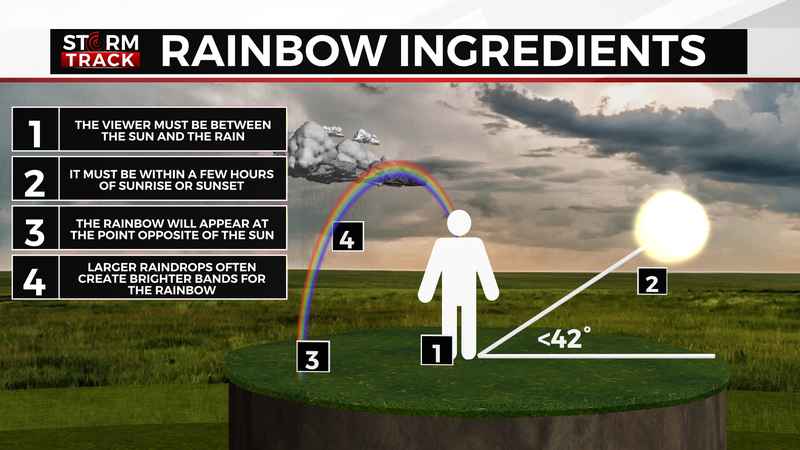Weatherz School: Ingredients needed for rainbow formation

Ingredients needed for rainbow formation[WDIO Storm Track Weather]
As a kid, I remember spotting a rainbow, and getting so excited. Because we all know a rainbow leads to a pot of gold, right?
Then in science class, I was crushed to find out a rainbow can’t lead you to hidden treasure simply because rainbows don’t have an end. A rainbow is an optical phenomenon that only appears when the right conditions fall into place. So grab your grocery bag, we’re going shopping for the ingredients needed to make a rainbow.
The first ingredient is your position. The viewer must be between the sun and the rain. If the sun is at your back and the rain is in front of you, you’re good to go.
Next on our list is the right sun angle. The raindrop needs to be viewed along a line of sight that makes a 42 degree angle with the ray of sunlight. So, the sun needs to be at an angle of less than 42 degrees above the horizon. This happens within a few hours of sunrise or sunset. The center of the rainbow’s arch is at the point opposite of the sun. The lower the sun is to the horizon, the larger the arch.
The final ingredient for the brightest rainbow is larger raindrops. What we’re seeing is light refracting as it enters the rain drop, bouncing off the back, and refracting again as it exits. This process allows the light to be separated into the color components. The larger the raindrop, the more defined the colors will be.
We will never be able to find a quick payday end of the rainbow. But, with these ingredients in mind, we can take in a pretty rich view.